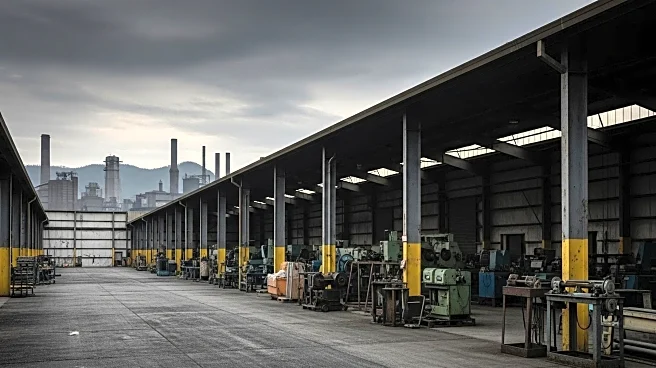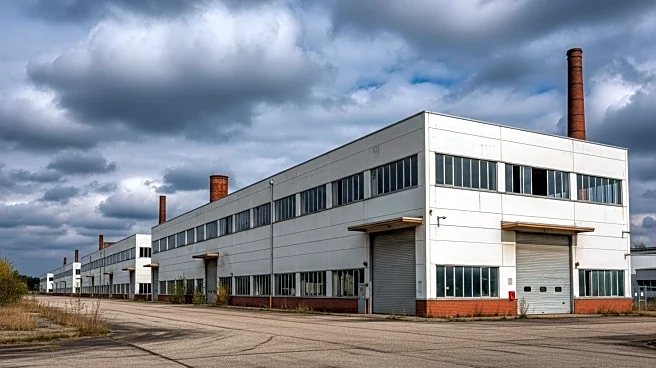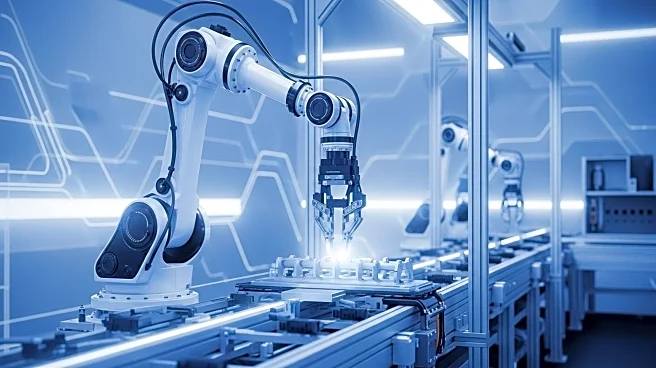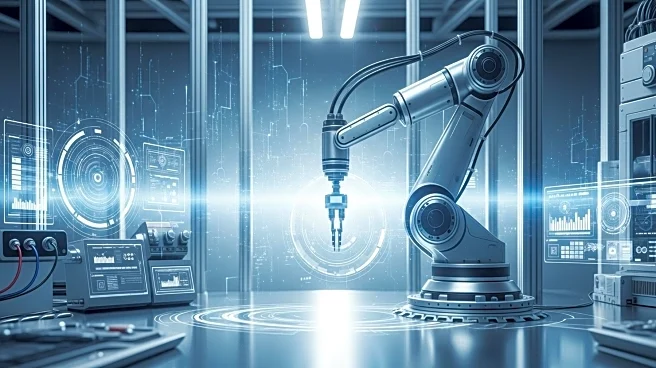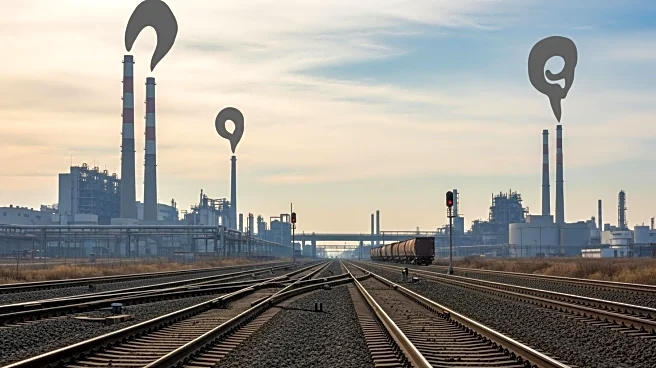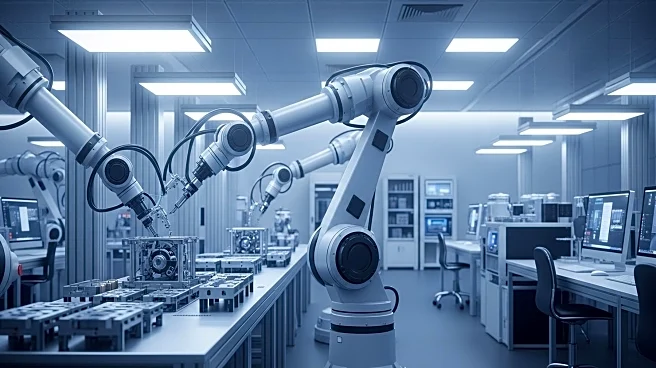What's Happening?
The American manufacturing sector is experiencing a prolonged downturn, marked by significant job losses and a contraction in activity. In August 2025, manufacturers shed 12,000 jobs, contributing to a total loss of 42,000 jobs since April 2025. This decline is part of a larger trend, with nearly 80,000 manufacturing positions disappearing over the past year. The durable goods sector, including automotive and electronics industries, has been particularly affected. The Institute for Supply Management's Manufacturing PMI registered 48.7% in August, indicating contraction for the sixth consecutive month. Factors such as automation, global competition, and economic uncertainties are contributing to this decline.
Why It's Important?
The contraction in the manufacturing sector has significant implications for the U.S. economy. Manufacturing is a key component of the job market, and its decline affects working-class communities reliant on stable, well-paying jobs. The downturn also impacts financial markets, as investor confidence is shaken by negative manufacturing indicators. Central banks may consider monetary policy adjustments, such as interest rate cuts, to address these challenges. The sector's struggles highlight broader economic issues, including slowed consumer demand and elevated interest rates, which dampen investment and consumption.
What's Next?
Manufacturers are likely to continue facing challenges such as high input costs and global trade downturns. The sector's decline may prompt policy interventions, including industrial policy measures to stimulate domestic production. Companies may need to invest in automation and AI to improve efficiency and reduce costs. The slight uptick in new orders offers a glimmer of hope, suggesting potential early acceleration in the economy's business cycle. However, the overall outlook remains uncertain, with ongoing geopolitical tensions and trade policies influencing future developments.
Beyond the Headlines
The manufacturing sector's decline is part of a long-term shift towards service-based economies, driven by automation and global competition. This transition reduces manufacturing's share of employment and GDP, impacting economic stability. The ripple effects extend to interconnected global supply chains, affecting industries reliant on complex supply chains, such as automotive and electronics. Regulatory burdens and tariffs also play a role, with compliance costs affecting smaller manufacturers. The sector's challenges underscore the need for strategic pivots, including digital transformation and supply chain resilience.
